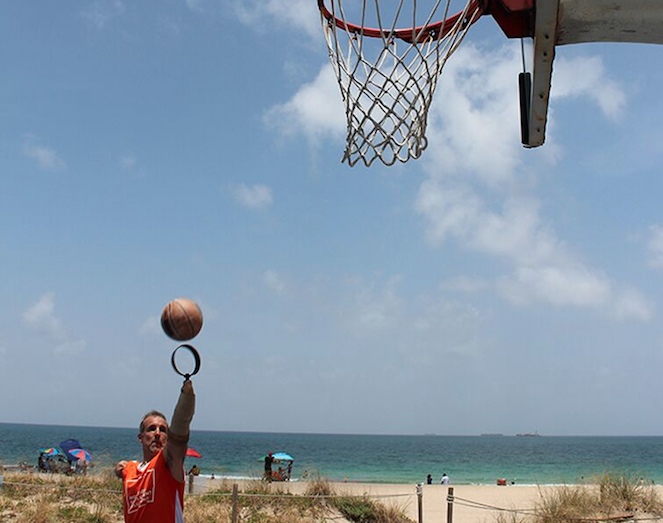“I wanted to keep playing basketball and got really motivated because I love the sport so much,” Hector said. “So I created a basketball device for myself. It was very simple.”
Hector’s basketball device worked so well it caught the attention of TRS Prosthetics, a company that specializes in developing body-powered prosthetic devices for individuals missing a hand(s).
“We were intrigued by Hector’s device because of its novel design,” said Bob Radocy, CEO and president of TRS Athletics and fellow upper limb amputee. “It’s really genius. The built-in flexible wrist movement created stored-energy capabilities, which is exactly what we need in our advanced prosthetic devices. These capabilities make it possible to dribble and shoot seamlessly.”
TRS and Hector worked together for six months fine-tuning and refining his original model. Together they made it more versatile to serve a wide range of adaptive athletes. Today, the TRS model is called the HP Hoopster. The new model is extremely lightweight, weighing 6 ounces, and made of a stiff but flexible polymer dual-surface “hoop” which captures the shape and size of a basketball perfectly.
The HP Hoopster has made it possible for thousands of individuals to keep playing a sport they love. “I’m so happy that this device is making a difference in people’s lives,” said Hector. “I was facing an obstacle and this was the solution. It just feels so great to be able to get out on the court and play.”
If you have questions about the HP Hoopster or want to purchase one directly, visit http://www.trsprosthetics.com/sports-recreation/basketball.asp#hoopster.


